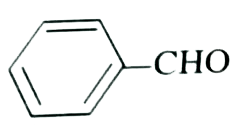Compound 'A' with molecular formula C4H9Br is treated with aq.KOH solution. The rate of this reaction depends upon the concentration of the compound 'A' only. When another optically active isomer 'B' of this compound was treated with aq. KOH solution, the rate of reaction was found to be dependent on concentration of compound and KOH both.
(i) Write down the structural formula of both compounds 'A' and 'B'.
(ii) Out of these two compounds, which one will be converted to the product with inverted configuration. Solution in Bengali
The rate of reaction of compound A(Me:C4H9Br) with aq. KOH depends upon the concentration of the compound 'A' only. So the reaction occurs by SN1) pathway. This shows that the compound 'A' is t-butyl bromide. [(CH3)3CBr]. Now, compound 'B' is an optically active isomer of compound 'A' . so compound B must be 2-borombutane. The rate of reaction of compound B with aq.KOH depends on the concentration of both substance and nucleophile, so the reaction proceeds by SN2 mechanism, causing inversion of configuration.

Topper's Solved these Questions
- HALOAKANES AND HALOARENESBOOK - CHHAYA PUBLICATIONCHAPTER - HALOAKANES AND HALOARENESEXERCISE - Solved NCERT Examplar Problems: Matching type
6 Videos
- HALOAKANES AND HALOARENESBOOK - CHHAYA PUBLICATIONCHAPTER - HALOAKANES AND HALOARENESEXERCISE - Solved NCERT Examplar Problems: Assertion-Reason Type
10 Videos
- HALOAKANES AND HALOARENESBOOK - CHHAYA PUBLICATIONCHAPTER - HALOAKANES AND HALOARENESEXERCISE - Solved NCERT Examplar Problems: Multiple Choice Questions(More than One correct type)
11 Videos
- GENERAL PRINCIPLES AND PROCESSES OF ISOLATION OF ELEMENTSBOOK - CHHAYA PUBLICATIONCHAPTER - GENERAL PRINCIPLES AND PROCESSES OF ISOLATION OF ELEMENTSEXERCISE - PRACTICE SET 6
10 Videos
- HYDROCARBONSBOOK - CHHAYA PUBLICATIONCHAPTER - HYDROCARBONSEXERCISE - PRACTICE SET 13
16 Videos
Similar Questions
Matching :

View SolutionAssertion (A) : Phosphorus chlorides (tri and penta) are preferred over thionyl chloride for the preparation of alkyl chlorides from alcohols.
Reason (R) : Phosphorus chlorides give pure alkyl hakides.
View SolutionConsider the following reaction and answer the question.

Which of the following statements are correct about this reaction-
View SolutionOut of C and CO which one is a better reducing agent at 673 K and why ?
View SolutionPh−C≡C−CH3Hg2+−−−→H3O+A .Here A is -
View SolutionWhich product is formed when the compound is treated with concentrated aqueous KOH solution ?
View SolutionWhich product is formed when the compound
 is treated with concentrated aqueous KOH solution?
is treated with concentrated aqueous KOH solution?
View SolutionCompound 'A' with molecular formula C_(4)H_(9) Br is treated with aq. KOH solution. The rate of this reaction depends upon the the concentration of the compounds 'A' only. When another optically active isomer 'B' of this compound was treated with aq. KOH solution, the rate of reaction was found to be dependent on concentration of compound and KOH both. (i) Write down the structural formula of both compounds 'A' and 'B'. (ii) Out of these two compounds, which one will be converted to the product with inverted configuration.
View SolutionWhich product is formed when the compound is treated with concentrated aqueous KOH solution
View SolutionCompounds A and B are the structural isomers of each other with molecular formula C_(4)H_(9)Br . Compound 'A' is a linear chain and optically inactive while 'B' is optically active. When compound 'A' is treated with aq. KOH solution, it gives compound 'C' whereas compound 'B' when treated with aq.KOH solution, it gives compound 'D'. Identify compound 'C' and 'D'.
View SolutionCompound 'A' with molecular formula C_(4)H_(9)Br is treated with aq. KOH solution. The rate of this reaction depends upon the concentration of the compound 'A' only. When another optically active isomer 'B' of this compound was treated with aq. KOH solution, the rate of reaction was found to be dependent on concentration of compound and KOH both. (i) Write down the structural formula of both compounds 'A' and 'B'. (ii) Out of these two compounds, which one will be converted to the product with inverted configuration.
View SolutionCompound 'A' with molecular formula C4H9Br is treated with aq. KOH solution. The rate of this reaction depends upon the concentration of the compound 'A' only. When another optically active isomer 'B' of this compound was treated with aq. KOH solution, the rate of reaction was found to be dependent on concentration of compound and KOH both.
(i) Write down the structural formula of both compounds 'A' and 'B'.
(ii) Out of these two compounds, which one will be converted to the product with inverted configuration.
View SolutionCompound 'A' with molecular formula C4H9Br is treated with aq. KOH solution. The rate of this reaction depends upon the concentration of the compound 'A' only. When another optically active isomer 'B' of this compound was treated with aq. KOH solution, the rate of reaction was found to be dependent on concentration of compound and KOH both.
(i) Write down the structural formula of both compounds 'A' and 'B'.
(ii) Out of these two compounds, which one will be converted to the product with inverted configuration.
View SolutionWhich product is formed when the compound is treated with concentrated aqueous KOH solution ?
View SolutionCompound 'A' with molecular formula C_(4)H_(9) Br is treated with aq. KOH solution. The rate of this reaction depends upon the the concentration of the compounds 'A' only. When another optically active isomer 'B' of this compound was treated with aq. KOH solution, the rate of reaction was found to be dependent on concentration of compound and KOH both. (i) Write down the structural formula of both compounds 'A' and 'B'. (ii) Out of these two compounds, which one will be converted to the product with inverted configuration.
View Solution
